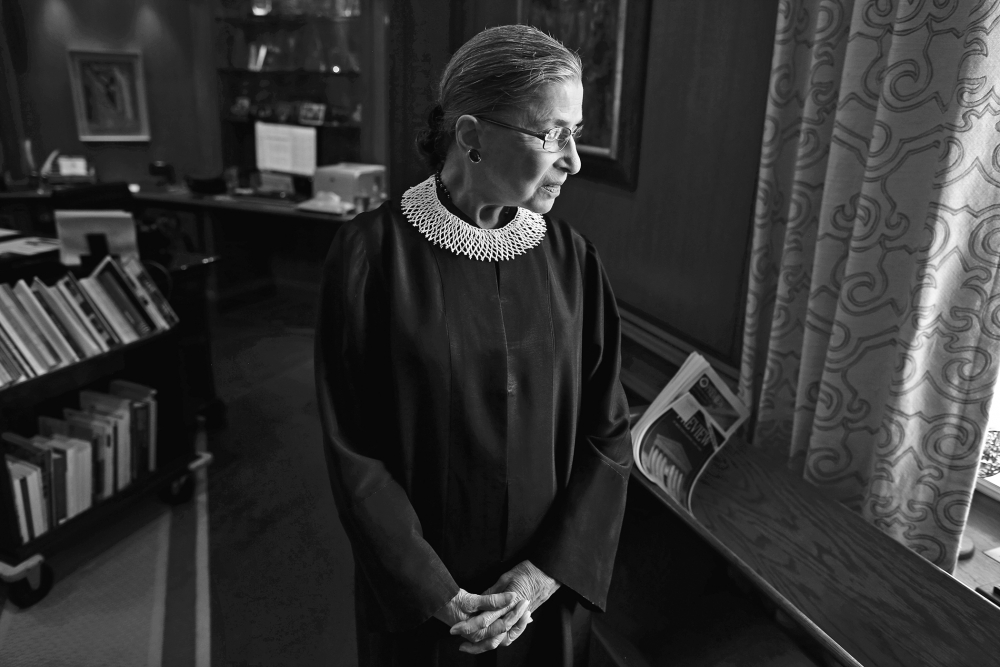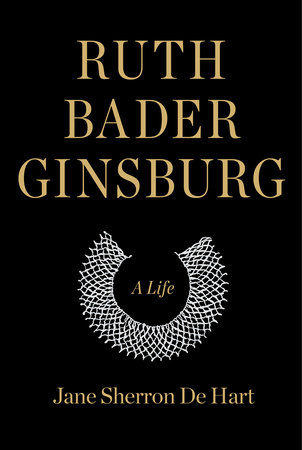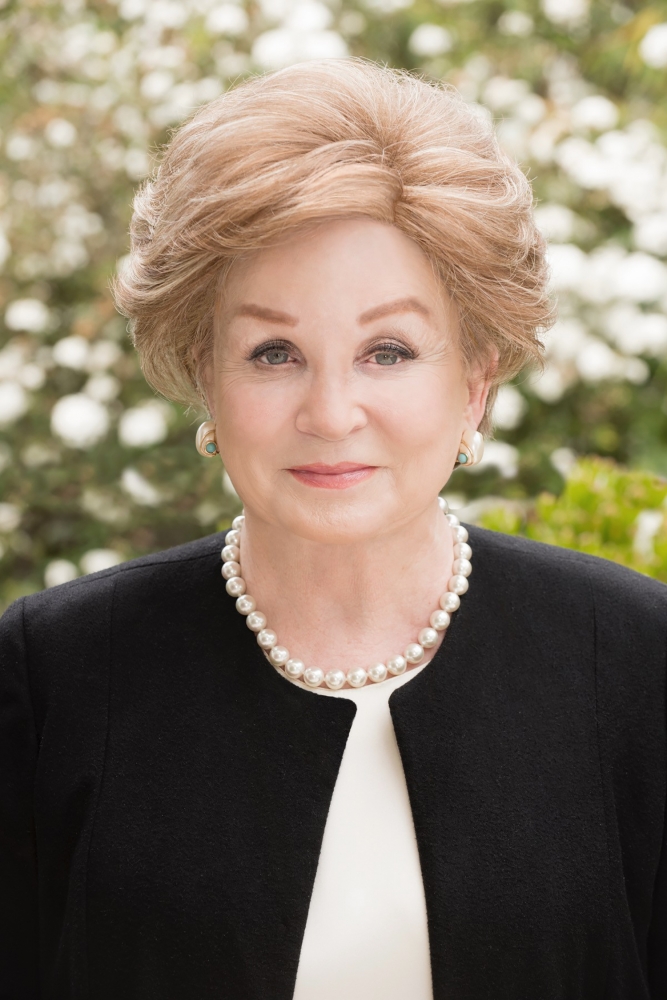
Ruth Is Truth


Before the word even existed, Celia Amster Bader showed shades of feminism. A young mother working in New York’s Garment District during the Great Depression, she nonetheless had a “very keen sense of what women could accomplish,” according to historian Jane Sherron De Hart.
“She talked a lot about, in the Jewish tradition, ‘women of valor,’” said De Hart, a professor emerita of history at UC Santa Barbara. “And not just Biblical figures but women like Lillian Wahl, who became famous for trying to provide medical care for immigrants on the Lower East Side, and Emma Lazarus, whose poem is engraved on the Statue of Liberty. She followed Eleanor Roosevelt’s column and very much admired how Eleanor used her position to speak for the people who really had no voice.”
Celia’s sensibility was absorbed by her daughter, Ruth, a voracious reader who developed her own pantheon of heroes: Greek goddess Athena, great champion of law; “Little Women” protagonist Jo March, who believed in women’s autonomy; Amelia Earhart.
“These were women who ‘did something, women who ‘mattered,’” De Hart said of Ruth, “and she was convinced from an early age, around 8 or 9 or 10, that she also wanted to ‘do’ something, though she had no idea then what it would be.”
And oh, how she succeeded. Ruth Bader is, of course, the now-ubiquitous Ruth Bader Ginsburg — U.S. Supreme Court Justice, pioneering litigator, revered advocate of equal rights. The Notorious RBG.
De Hart has captured Ginsburg’s unlikely journey from serious child to cultural icon in the just-published book, “Ruth Bader Ginsburg – A Life” (Knopf, 2018). Described as the first “full-life biography” of Ginsburg, the detailed volume traces her private, public, legal and philosophical evolution, from her humble Brooklyn upbringing through her continuing tenure with SCOTUS.
De Hart will make two local appearances to discuss and read from the book: Friday, Oct. 26, at 2 p.m. at Tecolote Books in Montecito, and Saturday, Oct. 27, at 7 p.m. at Chaucer’s Books in Santa Barbara.
“My book is the first to go all the way back to Ruth’s childhood, which was extremely formative, and her mother was an enormous influence,” said De Hart, who interviewed Ginsburg herself multiple times, over many years, in her work on the book. She also spoke with Ginsburg’s husband, Martin Ginsburg, her children, friends, peers from college and law school and myriad professional associates to compile the comprehensive portrait.
All told, De Hart said, it took 15 years to complete the biography that was not originally meant to be a biography at all.
“I started out wanting to write the history of the ACLU litigation on women’s rights, which Ginsburg led, and she was happy for me to come once a year with questions about that,” said De Hart, whose earlier book on the effort to ratify the Equal Rights Act won a prize from American Political Science Association. “But once I had the ACLU years, I did the years leading up to her time with ACLU. Then I realized, she is now on the Supreme Court and cases are coming down that, in one sense, are a continuation of her views that she had developed as litigator and I thought, ‘Well, these have to be followed.’
“And I had an editor who kept telling me, ‘You have to cover the next term, you have to cover the next term,’” added De Hart, who at one point lost much of her research (and her home) in the 2008 Tea Fire. “So it went on a lot longer than I ever anticipated. It’s not the way one would normally write a book, but it evolved into a biography.”
The wait, and the work, paid off.
Through many conversations and meticulous research, De Hart explores the central experiences that shaped Ginsburg’s passion for justice, her advocacy for gender equality, her meticulous jurisprudence and “her desire to make ‘We the People’ more united and our union more perfect.”
Among those experiences, take Ginsburg’s fateful decision to pursue law — to her father’s dismay — when it was a nearly exclusively male field. She arrived at Harvard Law School “one of nine women, in a class of over 500 men, and with a 14-month-old baby.” She made Harvard Law Review at the end of her first year. Moving with her husband to New York after two years, she finished her law degree at Columbia tied for first in her class. But she couldn’t get a job.
“At that time they just didn’t want to hire women — and ‘white shoe’ firms certainly didn’t want a Jewish woman with a young child,” De Hart said. “Ruth had a very keen sense of discrimination. But the litigation she did for the ACLU Women’s Rights Project was something she never expected to do. Her specialty was civil procedure, not women’s rights, but she took that on, pioneering a legal strategy challenging gender discrimination that changed the law of the United States.”
Serendipitous then, in a way, that De Hart’s biography is published during a new and complex era for women.
“I think the timing really is very good for this book — we couldn’t be more concerned with the Supreme Court right now,” she said. “And we couldn’t be more aware of the power of politicians to push through judges who would not necessarily be sympathetic to women’s issues broadly. So in that sense it is a good time.
“Amidst all the paraphernalia — the mugs and coffee cups and Christmas ornaments and ‘Ruth is my homegirl’ tattoos — there is a saying that I think today rings very true: ‘Ruth is Truth,’” De Hart added of Ginsburg’s widespread appeal and popularity. “I think it’s her integrity that comes through in her dissents, and that’s what younger people are responding to. It’s interesting to speculate about that because she has become such a pop culture icon — and here she is a great-grandmother in her 80s. It’s so unusual, because Supreme Court justices historically have been much more remote figures.”



